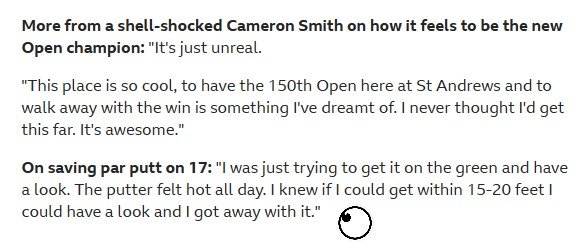D
Deleted member 23270
Guest
This is the best and most informative post in the entire threadYour data shows that there is a correlation between length and handicap it certainly does not show that the scope for improvement is greater with improving length than with anything else including improved dispersion.
The data for fairways hit is to put it mildly an awful proxy for accuracy. Degrees off line is more standard . Fairways hit does not tell you where your misses go and it does not correct for length.
USGA stats suggest that the average male golfer with a handicap hits the ball approximately 220 yds with a handicap of 14 whereas a scratch golfer will hit the ball on average around 260 yds. The average golfer over 70 who is off scratch will also hit the ball 220 yds so clearly there is an awful lot of improvement in dispersion and accuracy available to the average golfer.
How much of the improvement is due to length and how much is due to to other factors?
The only evidence I have seen is Lou Stagners review on Arccos of golfers increasing and decreasing driving distance. He associated an increased driving distance of over 10 yds with an improvement in score of 1.8 stokes per round whereas a loss of over 10 yds was associated with a loss of 0.8 strokes per round. suggesting that all of the gain was not due to a gain in distance. even if it was and let us say the average gain in distance was 14 yds that means for every 10 yds you gain a little less than 1.3 strokes per round. So for the difference between the average golfer at around 14 handicap and the scratch golfer hitting it 30-40 yds longer the length accounts for a maximum of 5 strokes and around 9-10strokes are accounted for by other improvements.
Now we have to look at the practicalities of increasing length and improving accuracy and other factors. I would suggest that up till your early and mid twenties impoving length is relatively easy and is largely a result of maturity.
After that it is fairly difficult to make significant increases in length if you don't have it. It is to quite a significant degree related to genes age and general conditioning.
The first two you can do nothing about the latter you certainly can, but how much increased length is realistic for the average golfer? I don't know, I have seen no figures, I suspect much over 30-40 yds is pushing it a lot and that for many golfers would be difficult. Taking the figure of 1,3 strokes per 10 yds would mean that the most you can gain through increased length is 5 strokes, I know an awful lot of golfers including myself who have gained more than that with no increase in distance in fact with a decrease in distance. I would suggeest that whereas increasing distance is undoubtedly useful it is not necessarily the most important factor of improving score and other combined factors are more likely to reduce the average golfers score if they are prepared to work at them.


